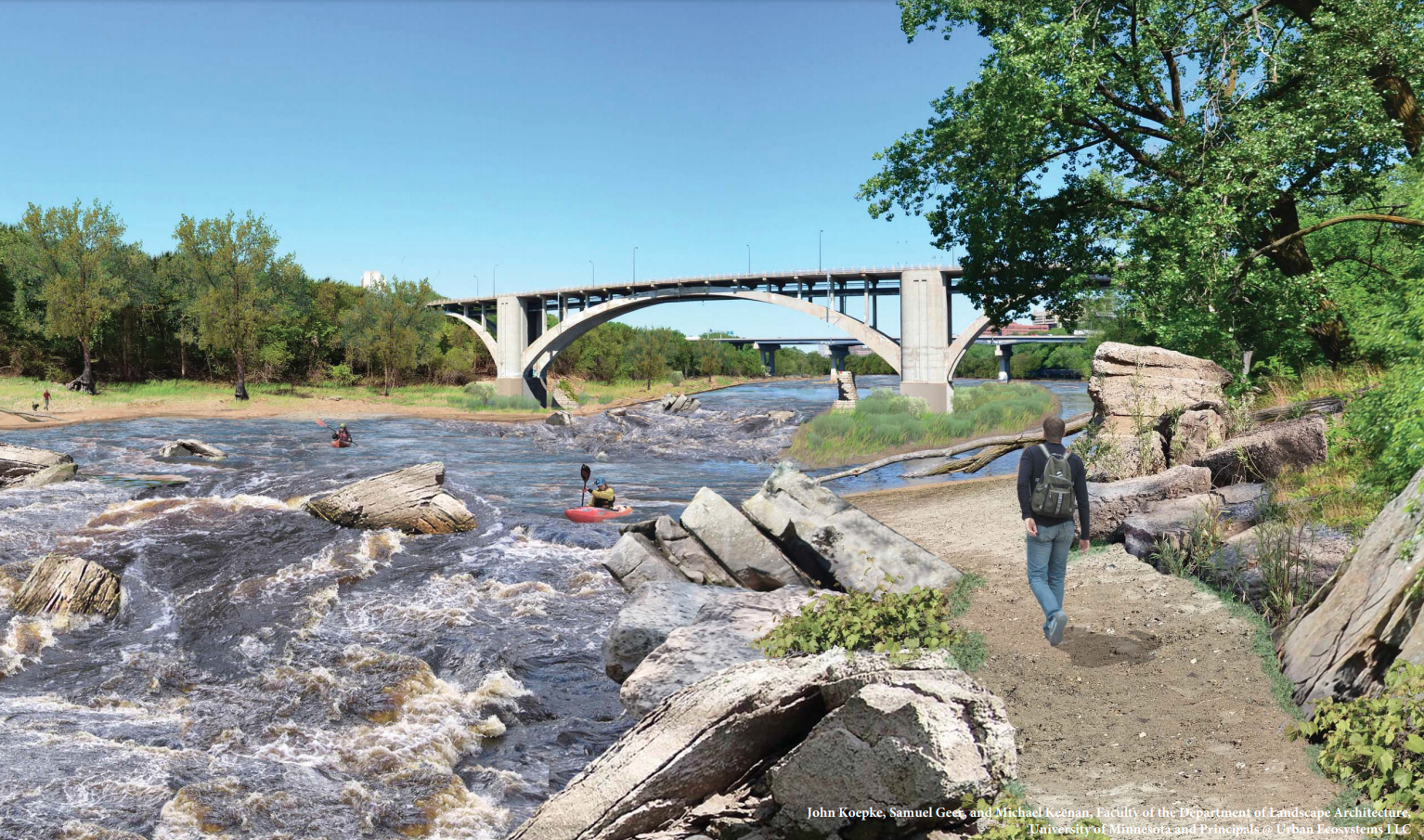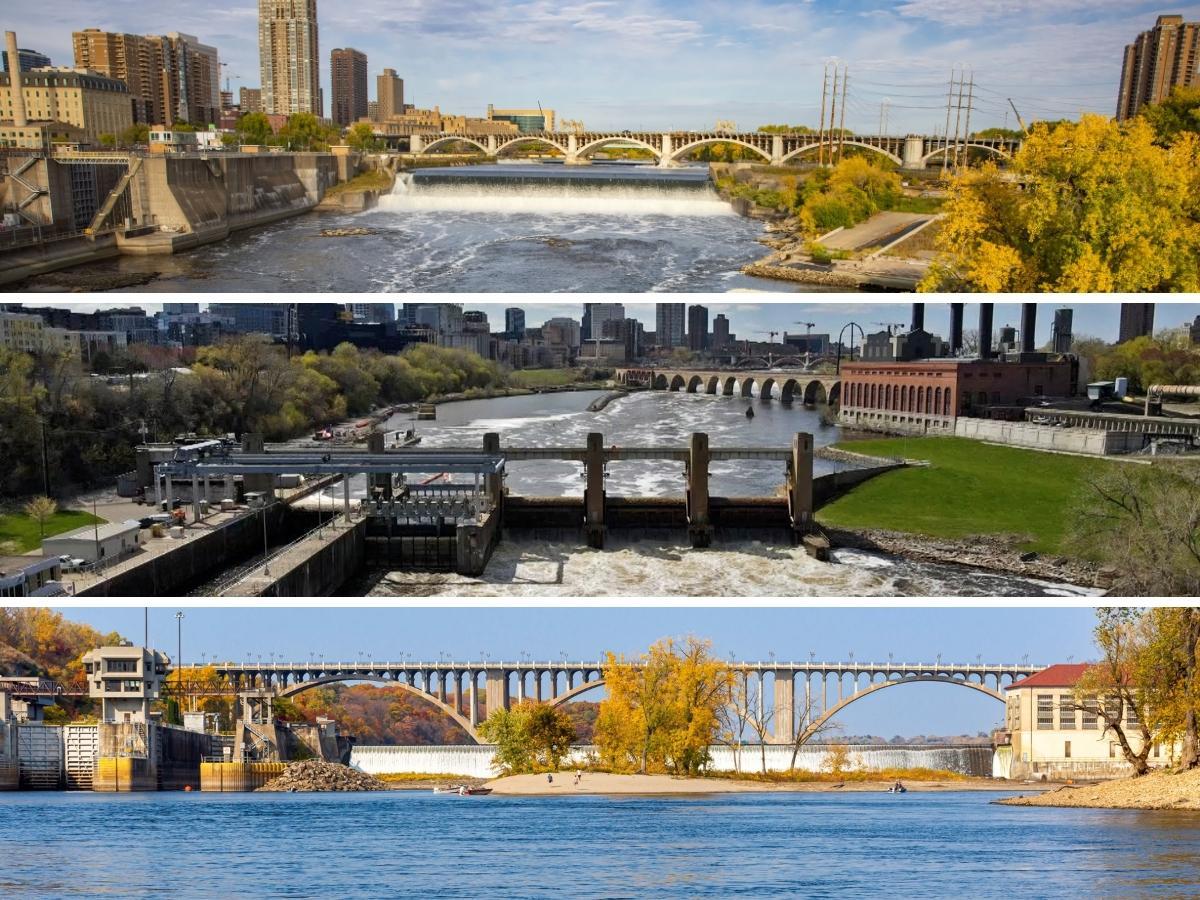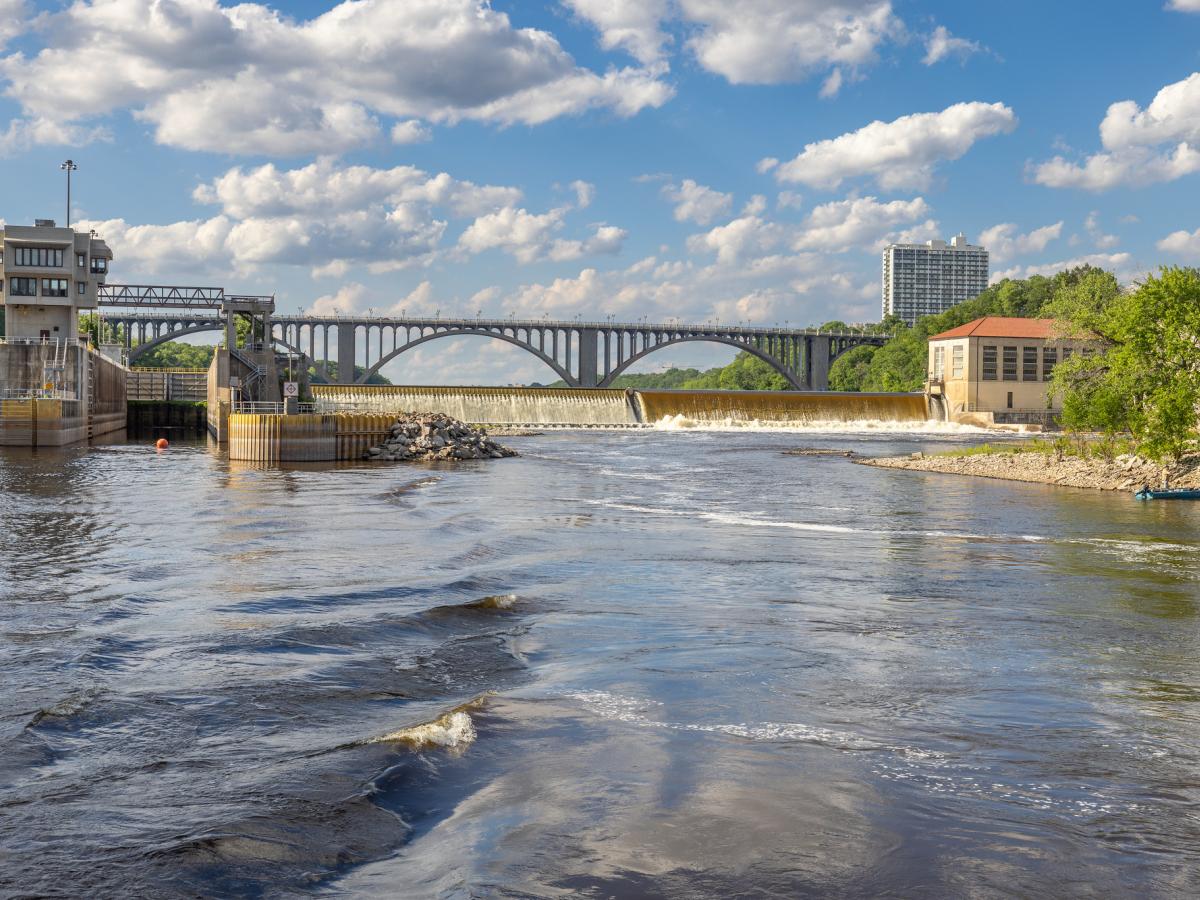What's going on with Twin Cities locks and dams?
In the 20th century, we made major public investments to transform the river for commercial and industrial purposes in the Twin Cities. In the 21st century, some of that old infrastructure is no longer useful, presenting us with an opportunity to reimagine our relationship to the river again.
A key part of that is one momentous decision we need to make in the next few years: Should we remove dams on the Mississippi River in Minneapolis and St. Paul?
It's a big question with big implications. As this issue is studied, FMR is working to make sure that community members have access to quality information and ways to be involved at key decision-making points.
What we do here will affect the Twin Cities and all communities downstream and may have an even larger ripple effect than we can imagine. Large-scale dam removal has never been done in a setting as urban as the Twin Cities. The Mississippi River’s global prominence only adds to the significance of this potential opportunity and might inspire other communities to reconsider the future of their rivers, too.
Which locks and dams are we talking about?
There are three locks and dams in the Minneapolis and St. Paul city limits.
The first two are roughly a half-mile apart on either side of the Stone Arch Bridge in downtown Minneapolis: Upper St. Anthony Falls lock and dam and Lower St. Anthony Falls lock and dam. The third, Lock and Dam No. 1 (Ford dam), is roughly 5.5 miles farther downstream.
Learn more about where these dams are located, their histories and their current uses.
Click the yellow dot and zoom in to see a photo of the locks and dams mentioned in this article.
What should stay? What might go?
These three structures were originally built to facilitate commercial shipping. These days, commercial river traffic on the Mississippi ends at the confluence with the Minnesota River (where barges continue to serve terminals in Burnsville and Savage). The Corps is studying the future of these three locks and dams because they no longer fulfill their original intended purpose. They do still help support several important aspects of our community's river use — including water supply management and hydropower generation — but they also fragment wildlife habitat and alter the river's natural flow.
We believe that the Corps should continue to maintain essential functions at the Upper St. Anthony Falls lock while conveying unneeded areas to the City of Minneapolis for restoration by Owámniyomni Okhódayapi (more about that below), but that the Lower St. Anthony Falls lock and dam and Lock and Dam 1 (the Ford dam) are prospective candidates for removal.
The Upper St. Anthony Falls lock and dam serve many essential functions at this time. They manage the river’s upstream water levels to provide reliable drinking water to one million Twin Cities residents, block the upstream spread of invasive carp, and prevent the collapse of St. Anthony Falls itself. In the future, it may be possible to remove some parts of the lock that are no longer necessary to maintain these essential functions.
But fully removing the Lower St. Anthony Falls and Ford locks and dams could reap big benefits. Removing these two dams would reconnect 39 miles of the Mississippi River. It could restore the types of rapids and floodplain habitats upon which many rare, threatened and endangered species rely, including mussels and paddlefish. And the river would become shallower, with a faster flow, enhancing recreational activities from paddling to shoreline fishing. (How would the removal of Lower St. Anthony Falls and Lock & Dam No. 1 change the river? Compare renderings of the metro Mississippi after dam removal with present-day photos.)
However, dam removal also has potential drawbacks. Costs to remove these structures and restore the river bottom will be significant. We need to ensure that such investments don’t foreclose possibilities for other priorities, such as creating new parks and river connections in marginalized neighborhoods. While new recreational opportunities could draw many users, some current flatwater river activities, such as rowing, would need to move elsewhere, potentially resulting in significant relocation costs for rowing facilities and programs.
Lock and Dam 1 and Lower St. Anthony Falls lock and dam also currently generate hydropower, though at a modest enough level that replacing their output from other renewable energy sources wouldn’t be difficult.
What's happening now?
Each of the three locks is undergoing a "disposition study" to help the Corps assess whether the structures should remain in place, and if so, who should be responsible for owning, maintaining and operating them. Those studies will take years.
Learn more about the Army Corps' process, potential scenarios and timeline.
FMR will advocate for the Army Corps to include a thorough consideration of dam removal. The draft completed study may be released for public comment sometime in 2027. (To be notified of opportunities to weigh in, sign up to be a River Guardian below.)
Once the Army Corps completes its study and issues recommendations about what should happen to the locks and dams, it’s up to Congress to approve and fund any changes to the structures, their operations or their ownership.
However, the Corps’ study will only include a high-level review of dam removal. It won't be sufficient for our elected leaders to make the best decision about these structures before they deteriorate to the point of requiring major reinvestment–or fail.
FMR is playing a leading role in filling this crucial gap with additional research. We have been recommended for $923,000 in funding from Minnesota’s Environment and Natural Resources Trust Fund (funded by state lottery proceeds), pending legislative approval in early 2026.
These funds are for a dam removal feasibility study for the Lower St. Anthony Falls Lock and Dam and Lock and Dam 1 to supplement the Corps' study with deeper research on habitat restoration opportunities, water quality impacts, endangered species impacts, sediment transport and more.
Additional supplementary studies are also underway at the University of Minnesota's St. Anthony Falls Lab and the National Parks Conservation Association. Together, they will support scientifically sound decision-making to improve the health of the Mississippi River in the Twin Cities and downstream. We anticipate all of these studies being completed in 2027 and 2028.

Our position
FMR supports the leadership of Owámniyomni Okhódayapi in its work to take ownership of some "excess" land at the Upper St. Anthony Falls Lock to restore Dakota culture and environment at the Falls. Removal of some parts of the lock structure itself may also be possible over time, but the damming function must be retained in some way.
We're eager to see a robust scientific review and community engagement process regarding the future of the other two locks and dams with plenty of time for community members and other stakeholders to collaboratively raise questions, look at alternatives, examine evidence and seek solutions. Dam removal is an intriguing possibility, but it needs more examination. Together, we can best chart a course to protect and restore the health of our river and all the communities and wildlife that depend on it.
Learn more and get involved
This process will unfold over many years, and FMR will be involved every step of the way.
We'll host a variety of workshops, tours and events about the future of Twin Cities locks and dams in the coming years. We're also happy to give special presentations to community groups upon request. And we'll be sure to tell our advocates about ways to weigh in and shape the future of our metro river.
Read our latest updates here. For additional details, contact FMR Land Use & Planning Program Director Colleen O'Connor Toberman, ctoberman@fmr.org, 651.477.0923. The best way to keep up with the latest news and hear about opportunities to get involved is to sign up as an FMR River Guardian below.
Other partners involved in this work as the Future Mississppi Collaborative include National Parks Conservation Association, American Rivers and Macalester College. You can read more about their perspectives and positions on their websites.
Become a River Guardian
Sign up and we'll email you when important river issues arise. We make it quick and easy to contact decision-makers. River Guardians are also invited to special social hours and other events about legislative and metro river corridor issues.
See a map of our three Twin Cities locks and dams, a timeline of when and why they were built, and find out why we may not need them anymore.
Removing two metro locks and dams would reconnect 39 miles of river through the Mississippi's only gorge, which is located right here in the heart of the Twin Cities. But is dam removal the best scenario for our metro river? Here's what we need to consider.
What will happen to metro locks and dams? Here's a rundown of the U.S. Army Corps of Engineers disposition study process and timeline, the scenarios under consideration, plus ways you can shape the river's future.


